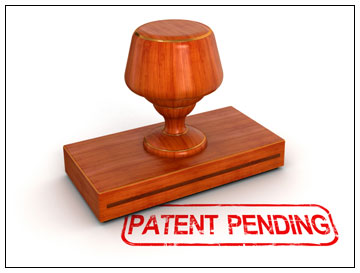Close gaps in your IP protection
By: WISCONSIN LAW JOURNAL STAFF//November 17, 2014//
By Christopher Liro
Andrus Intellectual Property Law LLP
Protecting a company’s intellectual property can create benefits, including improving competitiveness through technologies and branding that competitors may not use legally, keeping proprietary technologies secret and creating assets that can be borrowed against or licensed to create revenue streams.
An incomplete IP strategy, however, may leave a company with gaps that undermine the efforts (and expenses) that it took to protect its IP in the first place.
While large companies are not immune from such gaps, they are more common in small- to medium-sized companies with smaller management teams, less institutional experience with IP and fewer specialized legal resources. Even a medium-sized company with a dedicated research and development department may rely largely on technical staff to ensure that technologies are protected.
Employee agreements and policies: One common gap might be found in the HR department. The work of a company is performed by people — employees, contractors and vendors — who develop the ideas protectable as IP. Uncertainty about who owns the IP — the people or the company — can undermine otherwise strong IP rights. Uncertainty is more common when the people involved are not employees, but rather independent contractors and vendors, a scenario often prevalent in small companies.
Or, an employee may leave or have a falling out with the company. For this reason, all agreements with employees and contractors who may potentially create IP should assign any rights in the IP to the company and should provide that the employee or contractor will protect the confidentiality of the technology and cooperate in its protection, even after the employment or engagement ends. Even if employees do not have individual contracts, such provisions should be included in employee manuals or other statements of the terms of employment.
Patentable technology: Obtaining patents can be an expensive and time-consuming proposition. Smaller companies should consider patent applications only for highly important technologies. How to assess which inventions warrant this investment is a complicated question turning on the specifics of the marketplace and the company. But even a small company can implement procedures to maximize the strength of any patent application that is eventually filed. A key gap filler is use of a standardized process, often using an Invention Disclosure Form to memorialize conception of an invention.
 An Invention Disclosure Form is a confidential document completed by an employee or contractor to identify and document the basic information about an invention, including who participated in conceiving it, when was the invention conceived, and what the invention is, including identifying what distinguishes it from prior technology and the problems solved by the invention.
An Invention Disclosure Form is a confidential document completed by an employee or contractor to identify and document the basic information about an invention, including who participated in conceiving it, when was the invention conceived, and what the invention is, including identifying what distinguishes it from prior technology and the problems solved by the invention.
The form also should include information on the status of any prototyping and whether the invention was revealed outside the company or offered for sale.
In general, an application for a U.S. patent may be filed up to a year after public use or sale, but such use or sale will bar most international patents. Putting this information in one place contemporaneously with the invention will lay the foundation for any patent applications moving forward.
Trade secrets: Some technologies that are not patented may still be protected as trade secrets. Such protection is suited to methods of fabrication or composition “recipes” that may not be easily reversed engineered or otherwise revealed through the product itself.
Unlike patent protection, a trade secret does not require disclosing a company’s technology, may last indefinitely, and avoids the separate effort and expense of obtaining a patent. But, as the name implies, a trade secret is only valuable if it is kept secret and the company can show that it took measures to protect it.
An important first step is memorializing, to the extent possible, what the “secret” is. Doing so helps frame the steps to take and helps identify potential leaks and theft. Simply considering everything a “trade secret” or trying to define it after a problem arises may end up undermining the protections that are available. With or without such identification, moreover, businesses should adopt clear policies and agreements that ensure that all business information, trade secret or not, be maintained as confidential in perpetuity by employees, contractors and other vendors through non-disclosure agreements, or broader agreements and policies.
Trademarks: Trademarks protect a company’s brands and identity, which can be as important as patentable technology.
Obtaining a federally registered trademark is much less expensive than obtaining a patent, and provides protection and notice of the company’s rights beyond unregistered “common law” rights. A smaller company can invest in obtaining registrations for its key trademarks, while at the same time using the “TM” symbol next to its other brands and trade names to designate the words and/or symbols as unregistered trademarks.
Copyrights: Companies may create important copyrightable material such as software, product documentation and drawings. Even entities that are not “technology” companies typically create copyrightable content, including advertising material and Web pages. While marking such material with the “©” symbol is not necessary for the rights to exist, doing so may enlarge the available remedies against a copier and, more importantly, put the world on notice that the material should not be copied.
Christopher Liro is a registered patent attorney at Milwaukee-based Andrus Intellectual Property Law. He focuses on intellectual property litigation in federal district and appellate courts, and sits on the Board of Directors of the State Bar of Wisconsin’s Intellectual Property and Technology Law Section.
Legal News
- Former law enforcement praise state’s response brief in Steven Avery case
- Eric Toney announces re-election bid for Fond du Lac County District Attorney
- Former Wisconsin Democratic Rep. Peter Barca announces new bid for Congress
- Republicans file lawsuit challenging Evers’s partial vetoes to literacy bill
- More human remains believed those of missing woman wash up on Milwaukee Co. beach
- Vice President Harris returning to Wisconsin for third visit this year
- Wisconsin joins Feds, dozens of states to hold airlines accountable for bad behavior
- Trump ahead of Biden in new Marquette poll
- Bankruptcy court approves Milwaukee Marriott Downtown ‘business as usual’ motion
- New Crime Gun Intelligence Center to launch in Chicago
- Arrest warrant proposed for Minocqua Brewing owner who filed Lawsuit against Town of Minocqua
- Wisconsin Supreme Court justices question how much power Legislature should have
WLJ People
- Power 30 Personal Injury Attorneys – Russell Nicolet
- Power 30 Personal Injury Attorneys – Benjamin Nicolet
- Power 30 Personal Injury Attorneys – Dustin T. Woehl
- Power 30 Personal Injury Attorneys – Katherine Metzger
- Power 30 Personal Injury Attorneys – Joseph Ryan
- Power 30 Personal Injury Attorneys – James M. Ryan
- Power 30 Personal Injury Attorneys – Dana Wachs
- Power 30 Personal Injury Attorneys – Mark L. Thomsen
- Power 30 Personal Injury Attorneys – Matthew Lein
- Power 30 Personal Injury Attorneys – Jeffrey A. Pitman
- Power 30 Personal Injury Attorneys – William Pemberton
- Power 30 Personal Injury Attorneys – Howard S. Sicula











